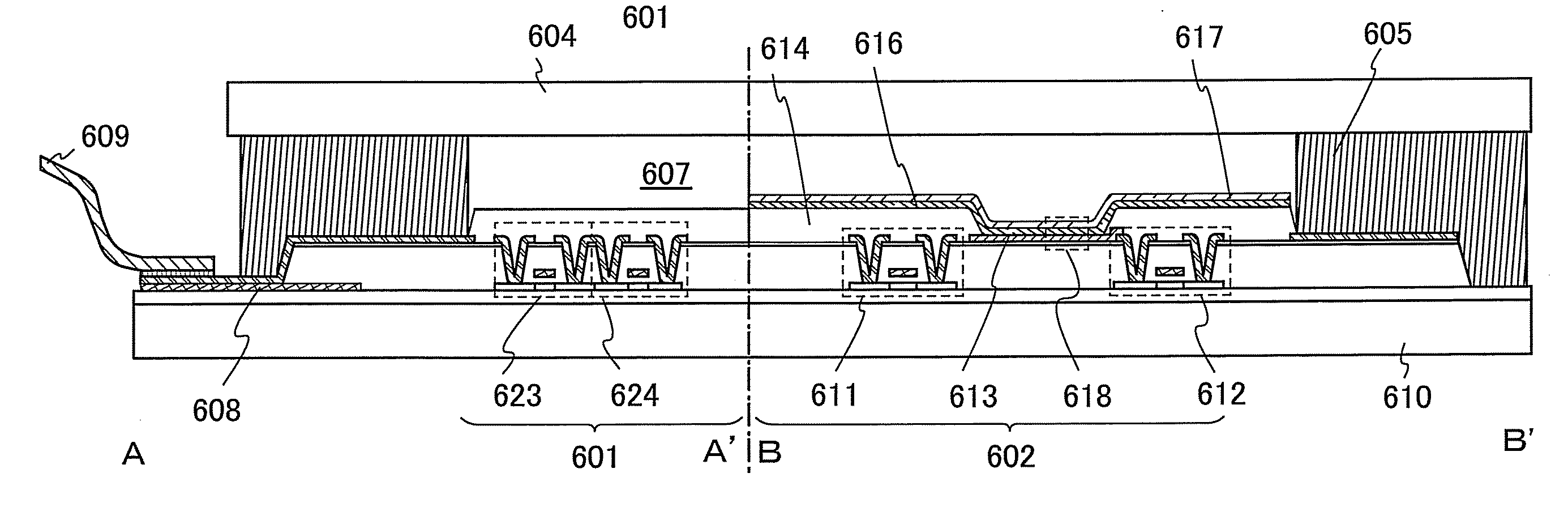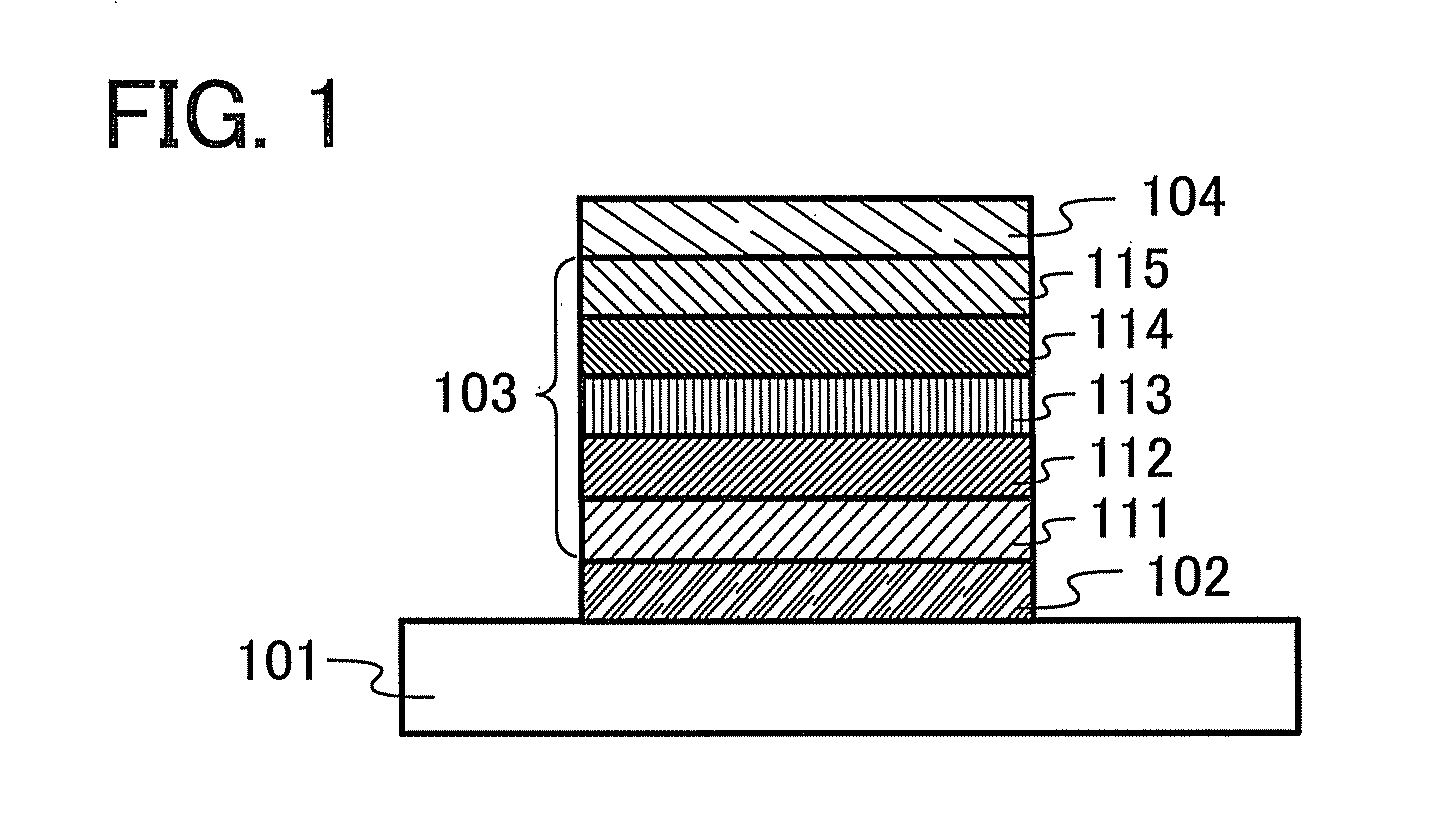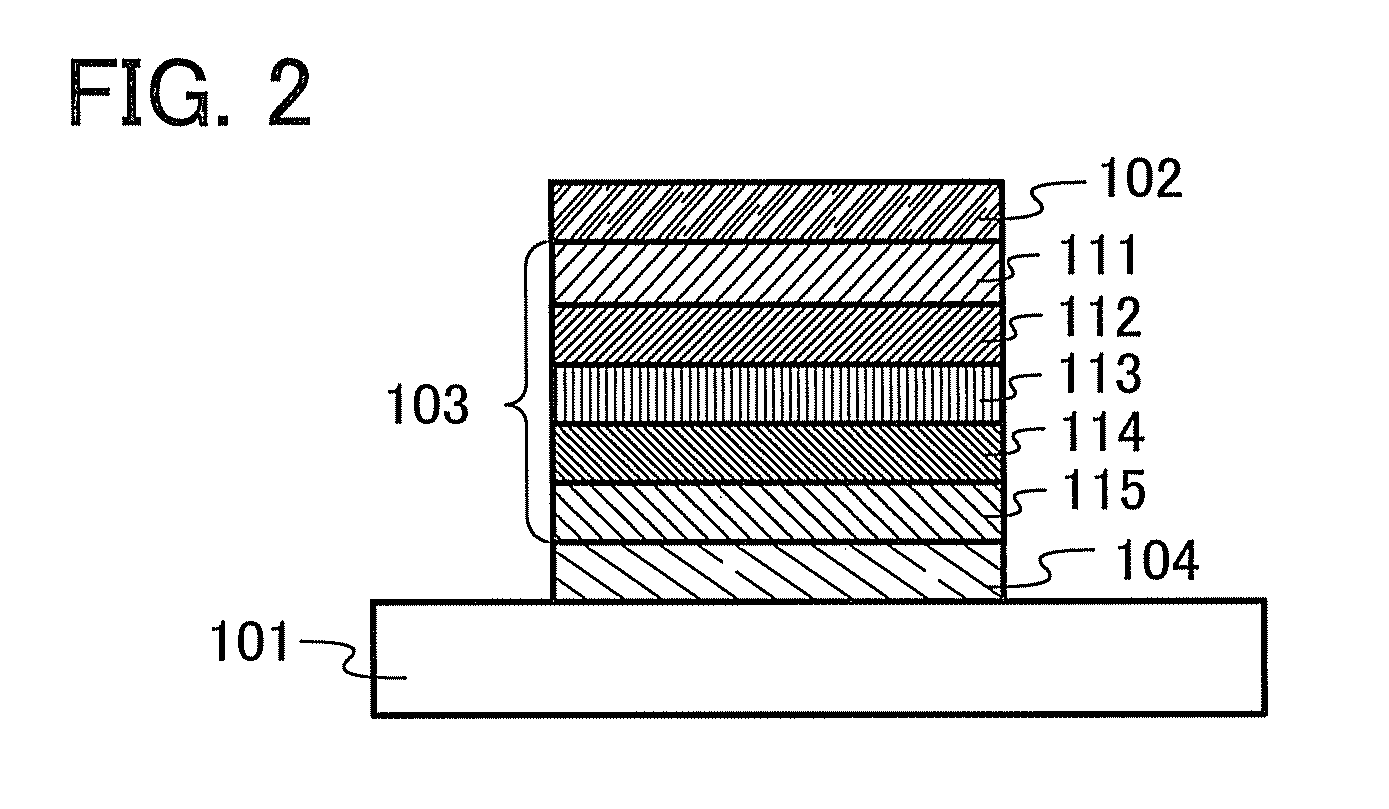Fluorene Derivative, Organic Compound, and Light-Emitting Element, Light-Emitting Device, and Electronic Device Using the Compound
a technology of organic compound and light-emitting element, which is applied in the direction of organic chemistry, thermoelectric devices, electric lighting sources, etc., can solve the problems of difficult to obtain a material having high triplet excitation energy and reduce emission efficiency, so as to improve the emission efficiency of light-emitting elements and reduce power consumption of light-emitting elements. , the effect of reducing the driving voltage of light-emitting elements
- Summary
- Abstract
- Description
- Claims
- Application Information
AI Technical Summary
Benefits of technology
Problems solved by technology
Method used
Image
Examples
embodiment 1
[0056]In this embodiment, an organic semiconductor material below will be described as an example of an organic compound of the present invention.
[0057]The organic semiconductor material according to one embodiment of the present invention has a fluorene skeleton and a structure in which an electron-accepting unit and a hole-accepting unit are bonded through carbon at the 9-position of the fluorene skeleton.
[0058]Specifically, the organic semiconductor material of this embodiment is an organic semiconductor material represented by General Formula (G1).
[0059]In the formula, EA represents an electron-accepting unit and HA represents a hole-accepting unit. Note that in the case where a substance derived by replacing a fluorene group bonded to HA with hydrogen is represented by HAH and a substance derived by replacing a fluorene group bonded to EA with hydrogen is represented by EAH, among HAH, EAH, and fluorene, EAH has the highest electron affinity and HAH has the smallest ionization ...
embodiment 2
[0099]In this embodiment, a synthesis method of the organic semiconductor material represented by General Formula (G1) below, which is described in Embodiment 1, will be described. The organic semiconductor material described in Embodiment 1 is a material in which both an electron-transport unit and a hole-transport unit are bonded to carbon at the 9-position of fluorene. In other words, the organic semiconductor material is an asymmetric substance. However, two hydrogen bonded to a carbon at the 9-position of unsubstituted fluorene are completely the same in terms of energy and cannot be distinguished from each other, which makes it very difficult to synthesize the organic semiconductor material by coupling reaction of unsubstituted fluorene and the electron-transport unit and the hole-transport unit. The present inventors have conducted diligent studies in view of the above and have found out that the organic semiconductor material described in Embodiment 1 can be obtained by a sy...
embodiment 3
[0149]In this embodiment, one embodiment of a light-emitting element including the organic semiconductor material described in Embodiment 1 will be described with reference to FIG. 1 and FIG. 2.
[0150]The light-emitting element of the present invention includes a plurality of layers between a pair of electrodes. The plurality of layers is a combination of a layer containing a substance having a high carrier-injection property and a layer containing a substance having a high carrier-transport property which are stacked so that a light-emitting region is formed in a region away from the electrodes, that is, so that carriers recombine in a region away from the electrodes.
[0151]In this embodiment, the light-emitting element includes a first electrode 102, a second electrode 104, and an EL layer 103 provided between the first electrode 102 and the second electrode 104. Note that in this embodiment, description is made on the assumption that the first electrode 102 functions as an anode an...
PUM
| Property | Measurement | Unit |
|---|---|---|
| ionization potential | aaaaa | aaaaa |
| ionization potential | aaaaa | aaaaa |
| internal quantum efficiency | aaaaa | aaaaa |
Abstract
Description
Claims
Application Information
 Login to View More
Login to View More - R&D
- Intellectual Property
- Life Sciences
- Materials
- Tech Scout
- Unparalleled Data Quality
- Higher Quality Content
- 60% Fewer Hallucinations
Browse by: Latest US Patents, China's latest patents, Technical Efficacy Thesaurus, Application Domain, Technology Topic, Popular Technical Reports.
© 2025 PatSnap. All rights reserved.Legal|Privacy policy|Modern Slavery Act Transparency Statement|Sitemap|About US| Contact US: help@patsnap.com



